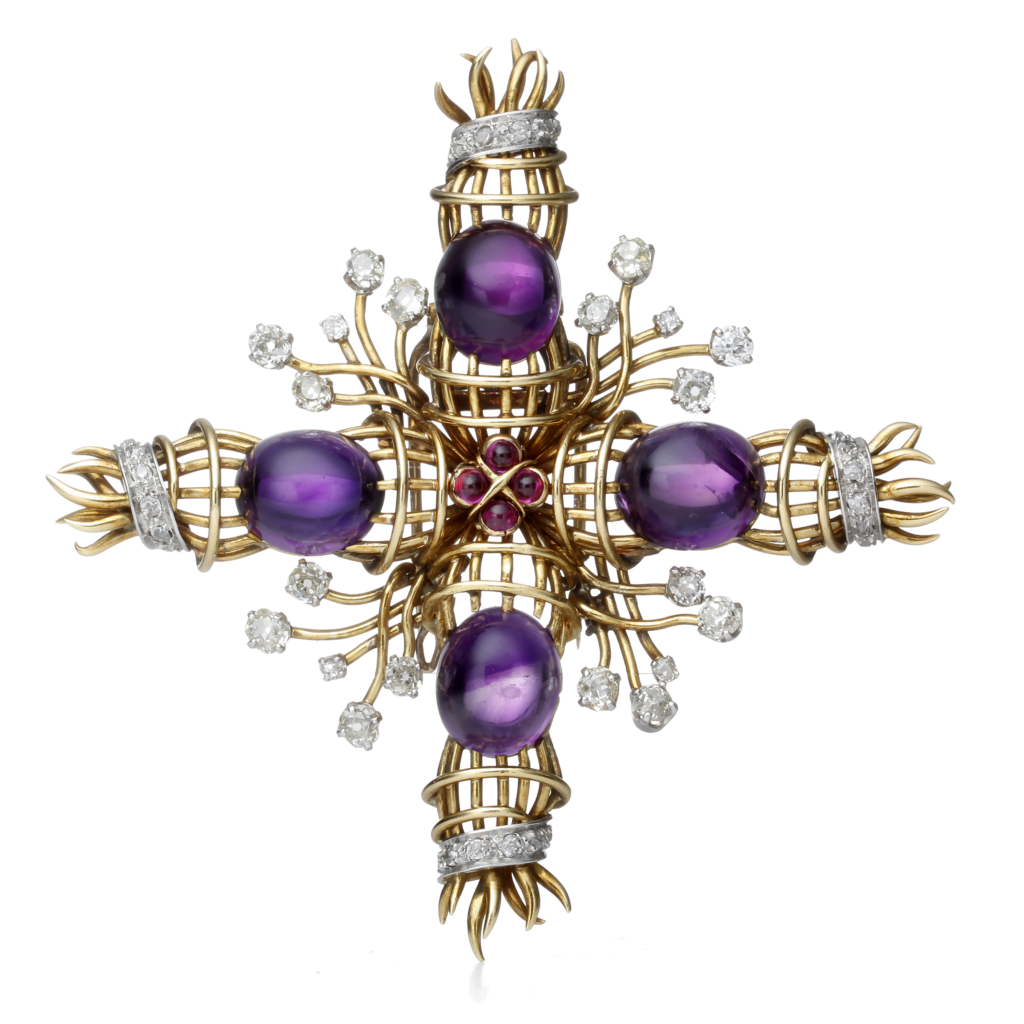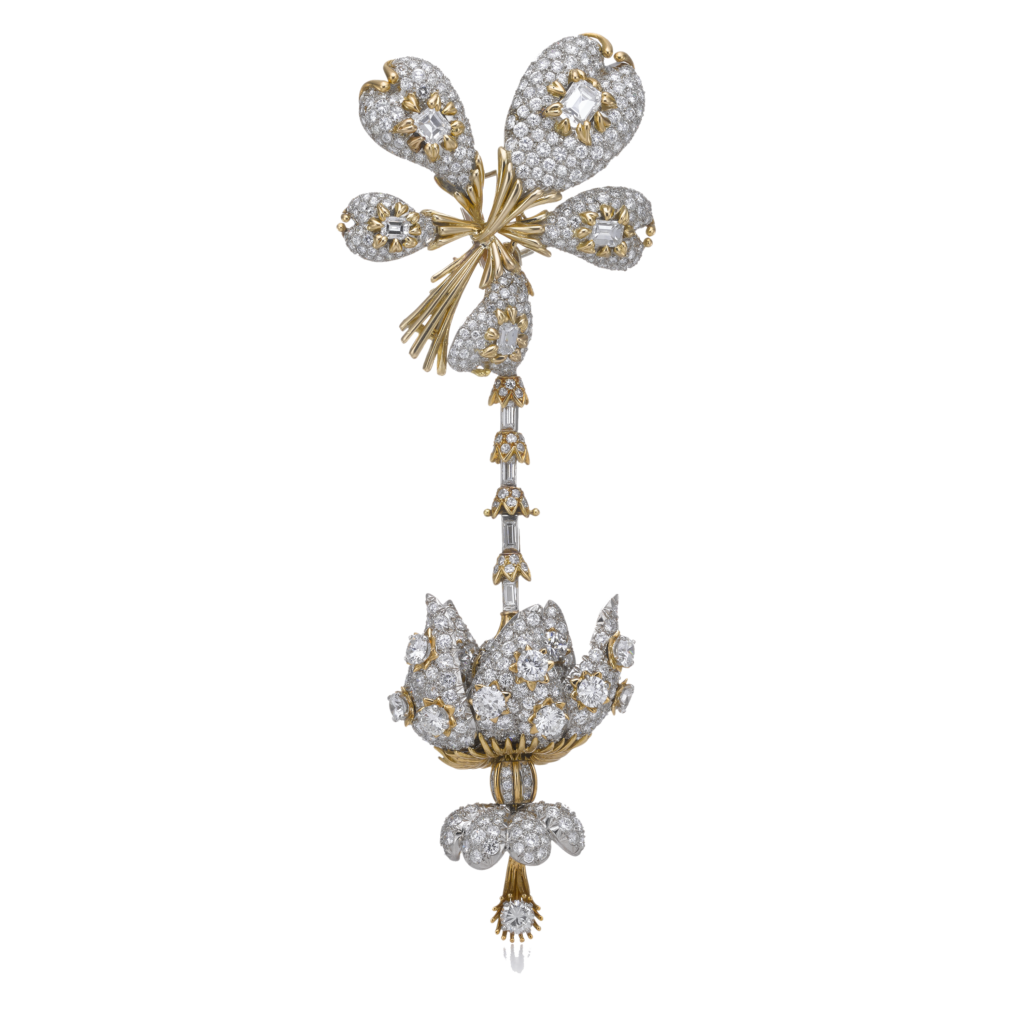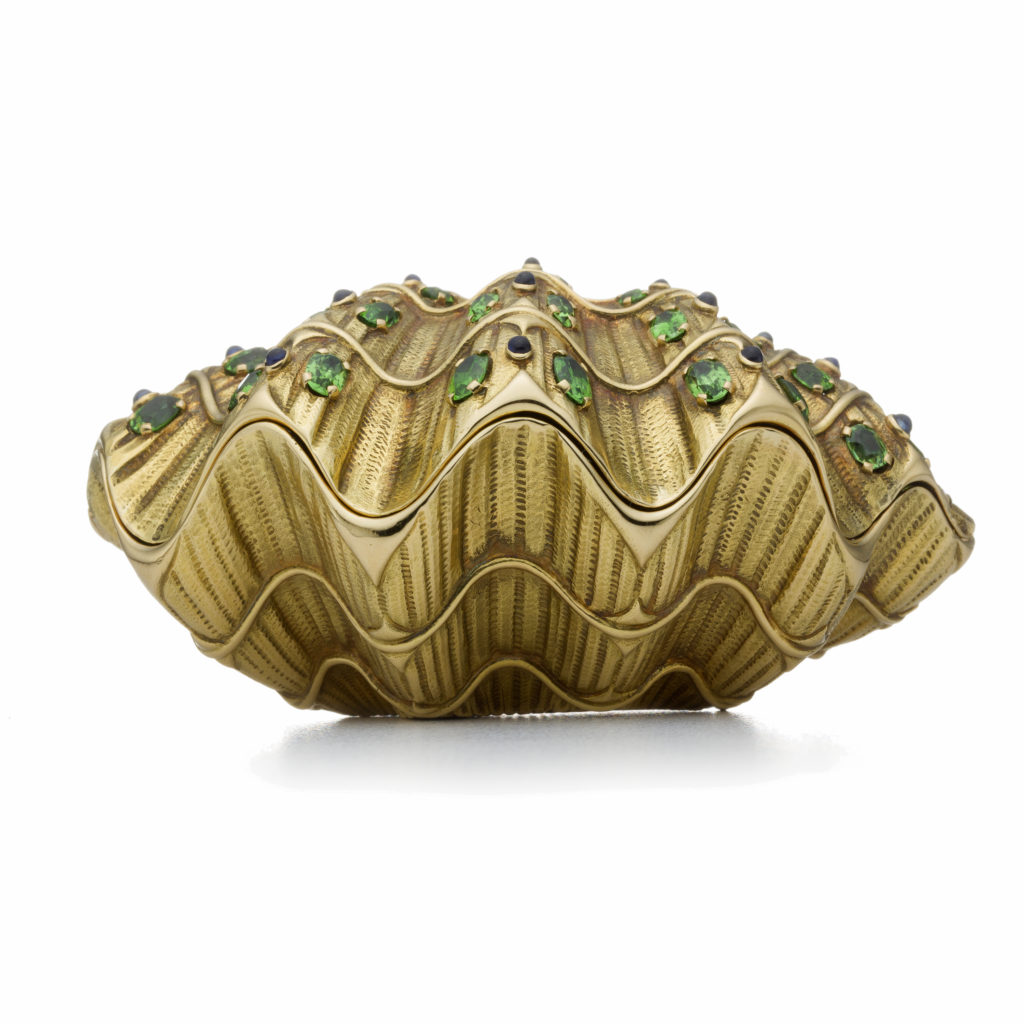
Arts & Culture
Jewels of the Imagination
Bunny Mellon’s Incredible Collection Created by Famed Tiffany Designer Jean Schlumberger Goes on Display at The Museum of Fine Arts, St. Petersburg.
By Ryan G. Van Cleave


My grandmother had a flowered globe Tiffany lamp hanging in the living room of her Iowa farmhouse. Every time we visited, I stood on a chair and ran my fingers across the colored glass that always gleamed like jewels in the afternoon sunlight. To me, the word “Tiffany” meant beauty, wonder, and exquisite elegance. (Imagine my surprise, years later, to learn that Tiffany and Co. made jewelry as well!)
Indeed, jewelry is the focus of this month’s article. Here’s why.
Only four designers have ever been allowed to sign their work for Tiffany and Co., and the most famous of these is French designer Jean Schlumberger, whose jewelry was a Must-Have for every high-fashion, jet-setting woman in the 1960s and 70s. If you want to see the brightly-colored wonders that made Schlumberger the epitome of mid-century elegance, you’re in luck.
The Museum of Fine Arts (MFA), St. Petersburg is currently showing the largest gathering of his works, and it’s barely an hour drive away.
 This glittery exhibition brings together the vast Schlumberger collection of Rachel Lambert “Bunny” Mellon, which was donated to the Virginia Museum of Fine Arts between 1985 and 2015. From Dec 15, 2018 to March 31, 2019, visitors will be able to see jewelry, cigarette cases, salt cellars, and so much more. To be clear, this is the most complete and comprehensive collection of Schlumberger’s work in the world. If you want to know why style icons such as Diana Vreeland, Elizabeth Taylor, and Jacqueline Kennedy sported Schlumberger jewelry on their necks, wrists, and lapels, you’ll just have to come and see the lively experimental designs and dazzling styling for yourself. He made the necklace Audrey Hepburn wore in the promotion of Breakfast at Tiffany’s.
This glittery exhibition brings together the vast Schlumberger collection of Rachel Lambert “Bunny” Mellon, which was donated to the Virginia Museum of Fine Arts between 1985 and 2015. From Dec 15, 2018 to March 31, 2019, visitors will be able to see jewelry, cigarette cases, salt cellars, and so much more. To be clear, this is the most complete and comprehensive collection of Schlumberger’s work in the world. If you want to know why style icons such as Diana Vreeland, Elizabeth Taylor, and Jacqueline Kennedy sported Schlumberger jewelry on their necks, wrists, and lapels, you’ll just have to come and see the lively experimental designs and dazzling styling for yourself. He made the necklace Audrey Hepburn wore in the promotion of Breakfast at Tiffany’s.
Mellon was Schlumberger’s most supportive patron and a close, close friend. So close, in fact, that Schlumberger used Mellon’s love for the natural world as the inspiration for many pieces. That resulted in pieces such as the Breath of Spring necklace (1966)—which has multi-shaded sapphires set among diamond-encrusted 18-karat gold spikes—and a pair of butterfly bracelets made of amethysts, sapphires, turquoise, peridot, yellow diamonds, and many other colored stones. Most impressive is how small hidden springs allow the butterflies to appear to flutter as the wearer moves. A well-reported quote by Schlumberger that appeared in many of his obituaries explains his vision for nature-themed work: “I try to make everything look as if it were growing, uneven, at random, organic, in motion.”
The MFA paired this exhibition with one of their own making, “Drawn to Beauty: The Art and Atelier of Jean Schlumberger,” which explores his process as artist and designer while giving a strong sense of his relationship with his world-famous clientele. MFA Curator of Collections and Exhibitions, Stanton Thomas, explains that part of Schlumberger’s genius is how he brought a much different vision of color to his designs. While everyone else was focused on classic combinations—typically yellow gold and white diamonds—along came Schlumberger who shocked the world with his use of rubies, amethysts, and sapphires, pairing reds and blues and exploring the power of contrast.
“Once Tiffany hired him in 1956, he had access to the finest materials, the largest and brightest stones,” Thomas says. “But one of the biggest surprises we found when assembling ‘Drawn to Beauty’ was in his early work from the 1930s. While it was made out of relatively inexpensive materials, we were shocked at the design. They were just as innovative and impressive as his later Tiffany work.” Another thing that Schlumberger’s sketches reveal is that while he was never formally trained in art or design, he demonstrated a striking technical precision in all of his work.
One other thing to note — “Drawn to Beauty” features pieces on loan from personal lenders as well as the Tiffany and Co. archive. Some of these were worn by the jet-set crowd, and some are never-before-seen pieces. For many, the chance to view these rare pieces holds as much appeal as the Mellon collection.
 Taken together, “Jewels of the Imagination” and “Drawn to Beauty” combine into one enormous once-in-a-lifetime presentation that reveals why Schlumberger was a master whose whimsical sense of color, design, and movement make him a permanent fixture in the history of 20th century jewelry design.
Taken together, “Jewels of the Imagination” and “Drawn to Beauty” combine into one enormous once-in-a-lifetime presentation that reveals why Schlumberger was a master whose whimsical sense of color, design, and movement make him a permanent fixture in the history of 20th century jewelry design.
It’s been a long time since I’ve seen a Tiffany item up close, so I’ll be in St. Petersburg again soon to remind myself why they deserve the reputation they’ve rightly enjoyed for decades. And don’t worry, MFA employees who might be worried that I’ll run my fingers across the Schlumberger pieces, I won’t!
Probably not, anyway.
For more information on the Museum of Fine Arts, St. Petersburg, please visit www.mfastpete.org or call 727.896.2667.



You must be logged in to post a comment Login